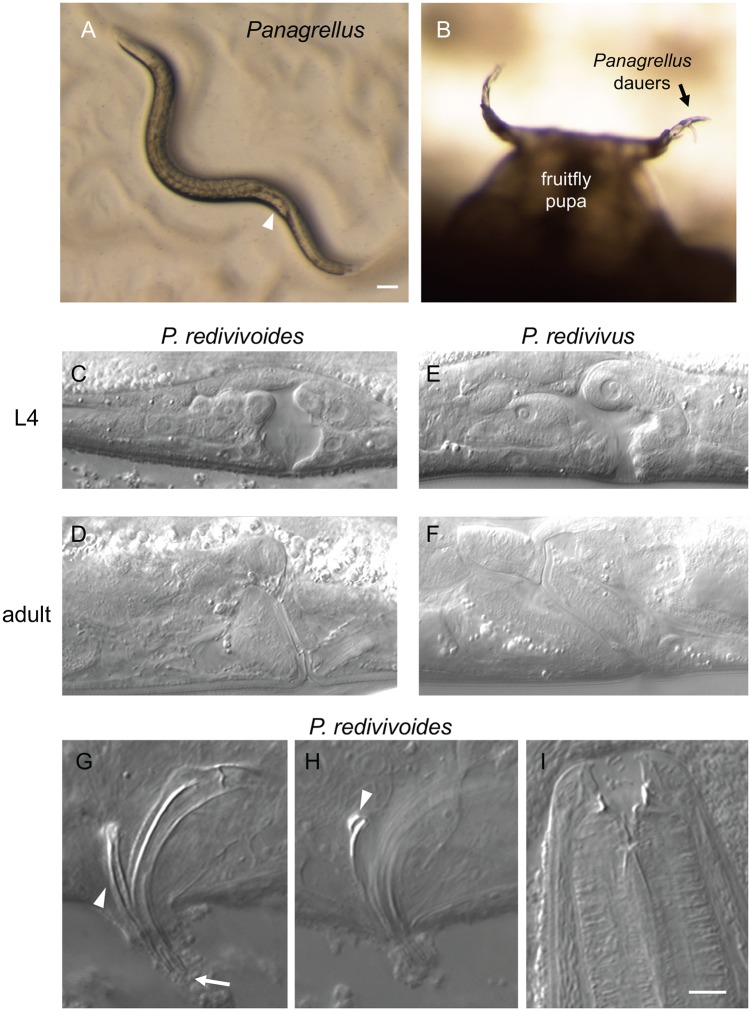Fig 2. Panagrellus in rotting fruits.
(A) Panagrellus adult female from rotting apple O801 from Orsay. The quite posterior vulva (arrowhead) and late-stage embryos accumulating in front of it are characteristic of Panagrellus. Bar: 100 μm. (B) Panagrellus dauers nictating on a Drosophila pupa in rotting pear B11-22 from Le Blanc. (C-F) Nomarski micrographs of L4 and adult vulvae of female Panagrellus redivivoides JU1476 (L4) and JU1798 (adult) and Panagrellus redivivus PS1163. Anterior is to the left, dorsal to the top for all panels, thus the uterus is on the left and the post-vulval sac is on the right in C-F. Most Panagrellus spp. display an anteriorly tilted vulva as shown for P. redivivus, while that of P. redivivoides is almost perpendicular to the ventral cuticle. (G) Spicule morphology of P. redivivoides (here strain JU1476). The forked ventral end of the spicules is indicated by an arrow, the gubernaculum by an arrowhead. (H) When in the proper focal plane, the dorsal side of the gubernaculum ends in the manner of a hook (arrowhead) (strain JU385). (I) Adult female mouth (here JU1055). Same scale for G-I. Bar: 5 μm.

